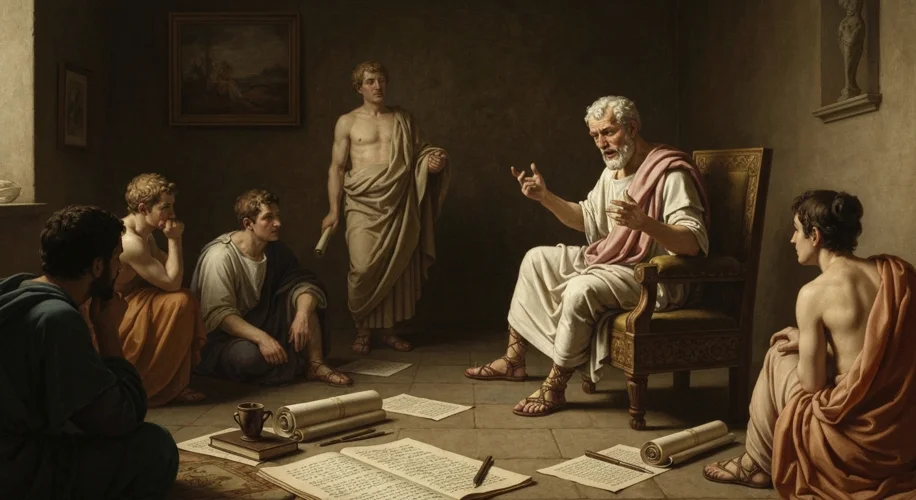Imagine a Rome not of silent scrolls and dusty libraries, but of vibrant public squares and intimate dinner parties. Imagine the air alive with the cadence of verse, the rhythm of language echoing the very pulse of the Republic and Empire. This was the world of Roman poetry – a world where the spoken word reigned supreme.
In ancient Rome, poetry was not merely an intellectual pursuit confined to the elite; it was a pervasive force, a form of entertainment, education, and even political discourse. The recitation of poetry was a cornerstone of Roman cultural life, a sophisticated art form honed through rigorous practice and a deep understanding of linguistic and rhetorical techniques. It was an auditory experience, designed to captivate and persuade an audience through the sheer power of sound and performance.
The Stage is Set: Background and Culture
The Romans inherited a rich tradition of oral poetry from the Greeks, but they forged their own distinct path. While Greek epics and dramas were often performed in grand theaters, Roman poetry found its voice in a more varied landscape. Public readings, often held in the Forum or private homes, were common. Poets would gather patrons, friends, and eager listeners to hear their latest works. These sessions, known as “recitationes,” were crucial for a poet’s reputation and livelihood. A successful recitation could lead to patronage, fame, and even political influence.
This culture of oral performance was deeply intertwined with Roman education. Young Romans were taught rhetoric and oratory, skills that naturally extended to the appreciation and performance of poetry. The ability to deliver a poem with clarity, emotion, and dramatic flair was a mark of a cultured individual. Figures like Cicero, renowned for his oratory, were also keen observers and practitioners of poetic recitation, understanding its power to move an audience.
A Symphony of Sound: Techniques and Acoustics
The Romans were acutely aware of the acoustic properties of their performance spaces and the nuances of their language. Latin, with its quantitative meter (based on syllable length rather than stress), lent itself to a flowing, musical delivery. Poets and reciters paid meticulous attention to:
- Meter and Rhythm: The consistent patterns of long and short syllables created a hypnotic rhythm, guiding the listener through the narrative and emphasizing key emotional beats. Think of the dactylic hexameter, the meter of Virgil’s “Aeneid,” with its rolling, epic sweep.
- Vocal Modulation: A skilled reciter would vary their tone, pitch, and volume to convey emotion, differentiate characters, and build dramatic tension. A hushed whisper could evoke intimacy or suspense, while a booming voice could convey authority or rage.
- Gestures and Posture: While the focus was on the voice, appropriate gestures and a commanding stage presence were also part of the performance. These visual cues reinforced the auditory experience, helping to paint a vivid picture in the listener’s mind.
- Pauses and Emphasis: Strategic pauses could create anticipation or allow a powerful line to resonate. Emphasis on particular words or phrases could highlight their significance, guiding the audience’s interpretation.

Key Figures and Their Voices
Consider the titans of Roman poetry: Catullus, whose passionate and often scandalous verses were likely delivered with a raw, emotional intensity to his social circle. Horace, whose odes, with their carefully crafted elegance and philosophical depth, would have been recited with a measured, sophisticated tone. And of course, Virgil, whose “Aeneid” was a national epic. It is said that Emperor Augustus himself would have Virgil read his epic to him, a testament to the power and prestige of the poet’s voice.
These poets, and many others, were not just wordsmiths; they were performers. They understood that the effectiveness of their art lay not just in the ink on the parchment, but in the breath that gave it life.
The Resonance of Meaning: Impact and Legacy
The oral tradition of Roman poetry had a profound impact. It ensured the widespread dissemination of literary works, making them accessible even to those who could not read. It fostered a shared cultural understanding and reinforced Roman identity. The dramatic delivery and emotional resonance of epic poems like the “Aeneid” helped shape the collective imagination and transmit Roman values and mythology across generations.
Moreover, this emphasis on performance influenced later literary traditions. The medieval tradition of reciting epic poems, and even the modern concept of a poetry reading, owes a debt to the Romans. The ability of a poem to connect with an audience on an emotional and visceral level, through the power of the spoken word, is a legacy that continues to echo through time.
In essence, the recitation of Roman poetry was a dynamic, multi-sensory experience. It was a sophisticated art form that engaged the ear, the mind, and the emotions, transforming written words into living, breathing performances that captivated the hearts and minds of ancient Rome.

